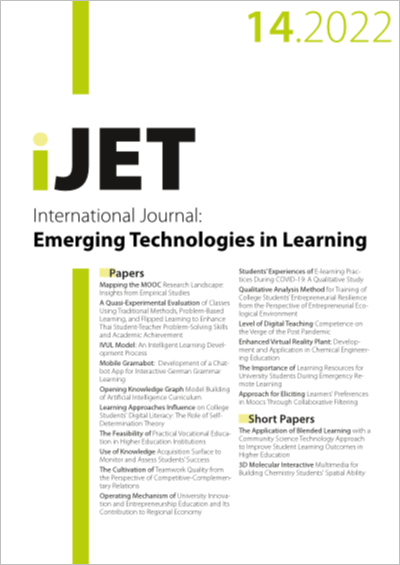Use of Knowledge Acquisition Surface to Monitor and Assess Students’ Success
DOI:
https://doi.org/10.3991/ijet.v17i14.31281Keywords:
e-learning, learning analytics, learning data, knowledge flow, knowledge managementAbstract
The aim of the Knowledge Acquisition Monitoring (KAM) approach created is to teach faster and/or more in a particular time frame. The KAM Question Framework that was designed according to the KAM approach ensures the active involvement of the students in the study process and provides them with relevant and updated content in real-time. The obtained data enables understanding the nature of knowledge acquisition - to improve the content, and enhance the efficiency of the learning process. 3-D coordinates were used to design the Knowledge Acquisition Surface (KAS). This surface describes the relevance of the e-course content to the needs of a student or group of students. The course suitability evaluation is performed considering the area in which the obtained knowledge acquisition data point is located. The approach provides the teacher with insight into the specific needs of students, and facilitates e-course improvement.
Downloads
Published
How to Cite
Issue
Section
License
Copyright (c) 2022 Iveta Daugule, Atis Kapenieks, Zanis Timsans

This work is licensed under a Creative Commons Attribution 4.0 International License.


